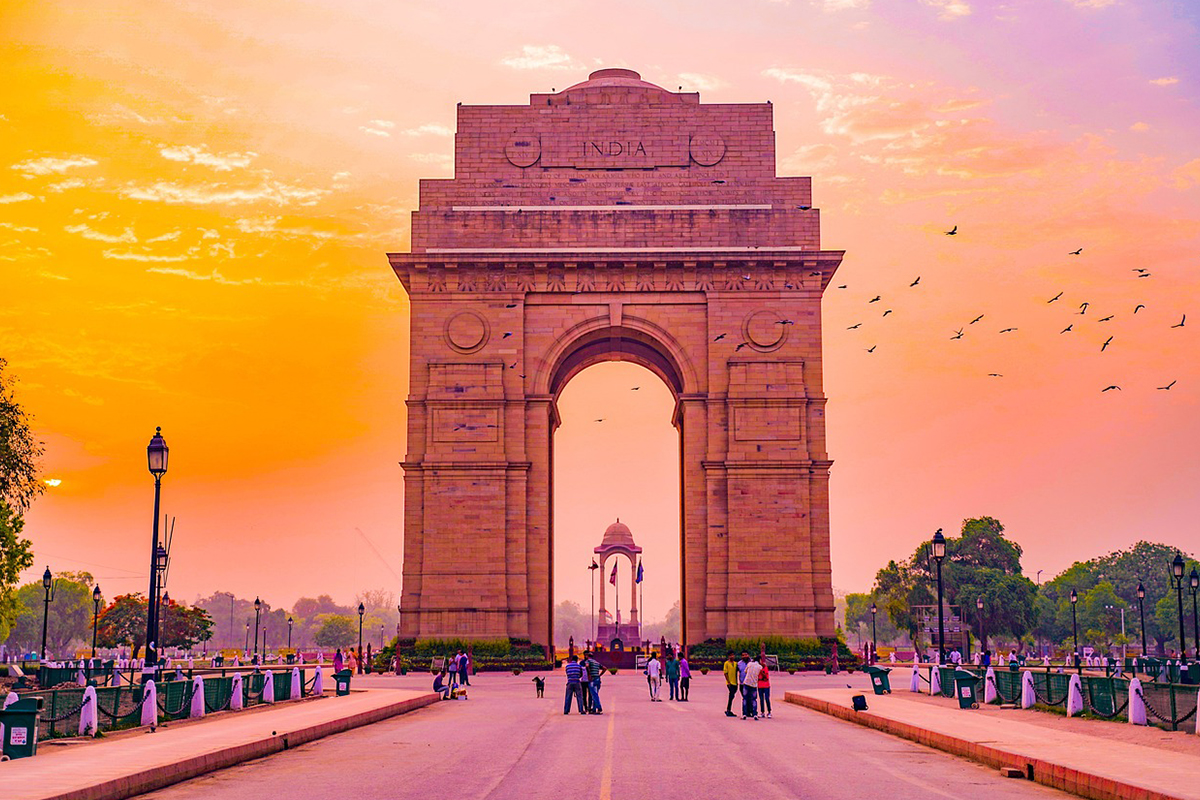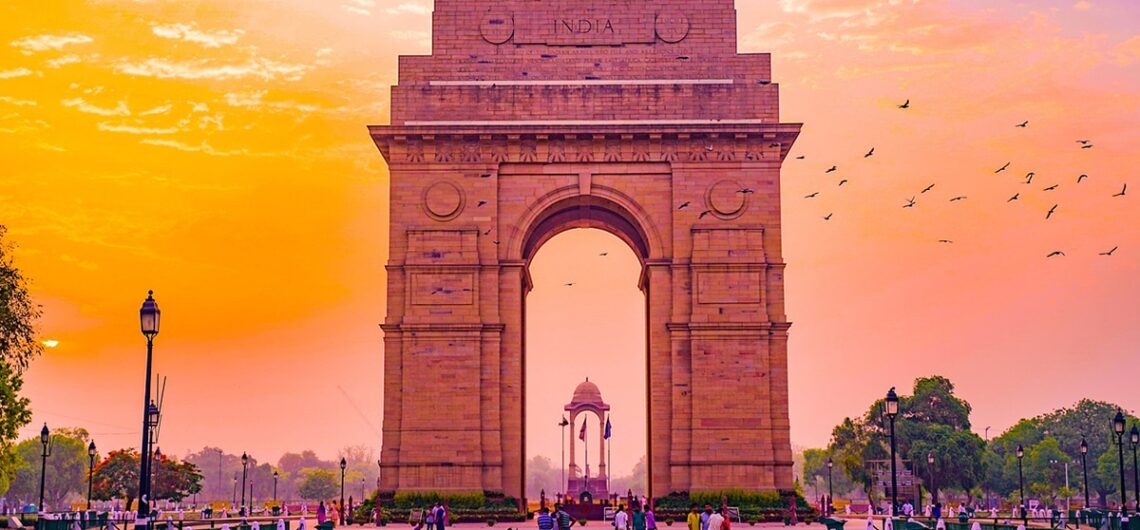Overview of the The Evolution of Delhi
One of the oldest cities in the world, Delhi has seen the rise and fall of powerful dynasties. Delhi has evolved from a mythological city to a huge modern capital, with its foundations firmly rooted in ancient history and an ever-changing skyline. Delhi’s development is a reflection of its historical significance as well as its contribution to the formation of India’s political, social, and cultural landscape. We’ll delve deeply into Delhi’s development from an ancient metropolis to the vibrant capital of contemporary India in this essay.

Overview: The Evolution of Delhi: From Ancient City to Modern Capital
One of the oldest cities in the world, Delhi has seen the rise and fall of powerful dynasties. Delhi has evolved from a mythological city to a huge modern capital, with its foundations firmly rooted in ancient history and an ever-changing skyline. Delhi’s development is a reflection of its historical significance as well as its contribution to the formation of India’s political, social, and cultural landscape. We’ll delve deeply into Delhi’s development from an ancient metropolis to the vibrant capital of contemporary India in this essay.
Delhi in Antiquity
Delhi’s Historical Background
Delhi has ancient roots that date back thousands of years. Based on archeological findings, it appears that people first settled in the area about the second millennium BCE. However, the more colorful stories about Delhi’s early history can be found in the old writings and folklore.
Indraprastha’s Mythological Significance
Delhi is mentioned in the Indian epic, the Mahabharata, among other places. The city was referred to as Indraprastha, the Pandava capital, in legend. Delhi has a spiritual and cultural importance that is still relevant to people today because of this mythological allusion.
Delhi in the Middle Ages: The Sultanate Era
The Delhi Sultanate’s Ascent
The Delhi Sultanate was established in the area in the twelfth century. Subsequent Muslim dynasties succeeded the Ghurids in transforming Delhi into a hub of politics and culture. Many governing dynasties called the city home, and it was during this time that Delhi’s medieval architecture and urban design were largely established.
Delhi as the Political Center
Delhi was an important center for trade and political power because of its advantageous position. The Khiljis and Tughlaqs, two of the Sultanate’s dynasties, reinforced the city and made it the hub of military and political authority.
Mughal Delhi: A Prosperous Metropolis
Mughal Era Architectural Wonders
In Delhi, the Mughals, and especially Emperor Shah Jahan, left a lasting impression. During this time, Mughal architecture was at its height, and the city’s landscape was defined by imposing structures like the Red Fort, Jama Masjid, and Humayun’s Tomb.
Shah Jahan’s Legacy and the Establishment of Shahjahanabad
Enthralled with the city, Shah Jahan created Shahjahanabad (Old Delhi) and relocated the Mughal capital from Agra to Delhi. With its bustling marketplaces, opulent palaces, and imposing mosques, this walled city developed became the political and cultural center of the Mughal Empire.
Delhi’s Colonial History: The British Effect
Delhi became the new capital after Calcutta
The capital of India was moved from Calcutta to Delhi in 1911 by the British colonial authority. The historical significance and central location of Delhi played a major role in this decision. With the relocation, Delhi’s history began anew.
British development of New Delhi
New Delhi was painstakingly planned and built by the British, using architects Edwin Lutyens and Herbert Baker. With its expansive administrative buildings and broad boulevards, this new city epitomized colonial power and mirrored the splendor of the British Empire.
Following Independence Delhi: The Inception of a New Country
Delhi as the Nation’s Capital after Independence
India became an independent nation in 1947, and Delhi was designated as its capital. Jawaharlal Nehru, the country’s first prime minister, made his well-known “Tryst with Destiny” address in Delhi, signifying the emergence of a free and democratic India.
Urbanization and Modernization
Delhi saw fast urbanization after gaining freedom. The city grew outside of its prehistoric borders as new neighborhoods, businesses, and infrastructure initiatives turned it into a contemporary metropolis.
Delhi’s Cultural and Social Transition
The Multicultural Fabric of Delhi
Delhi is a cultural melting pot. Delhi’s cultural fabric has been enhanced over the ages by the influx of individuals from all over the world and India. Delhi provides an exceptional fusion of the old and the modern, from modern art to traditional festivities.
Traditions and Languages
Although Hindi and English are the most widely spoken languages, Delhi is home to many different linguistic communities, such as speakers of Bengali, Punjabi, and Urdu. The celebrations and customs of the city, from Eid to Diwali, showcase its diverse population.
Economic Development: From Commercial Hub to Economic Superpower
The Developing Industrial Sector in Delhi
Delhi has become a major economic force in recent decades. The city has developed into a significant center for industry, trade, and banking from its position as a prominent trading post in antiquity.
The Part Globalization Plays
Delhi’s expansion has been further expedited by globalization. The IT sector, the service sector, and the entry of international corporations have all contributed to Delhi’s economy’s global integration and diversity.
Delhi, Today: A Global City with Connectivity and Infrastructure
Delhi has state-of-the-art infrastructure nowadays, including the Delhi Metro, which has completely changed public transit in the area. Delhi is one of the most linked cities in India thanks to its vast road networks, airports, and communication infrastructure.
Problems That Modern Delhi Is Facing
Delhi is a rapidly growing city, yet it also faces many difficulties. In order to ensure sustainable development, the city must address a number of concerns, including pollution, traffic congestion, overcrowding, and inadequate public services.
The Political Importance of Delhi in the Twenty-First Century
Indian Politics at Its Core
Delhi is the political capital of India and the location of the government. All of the nation’s most significant political institutions are located in Delhi, from the Parliament to the Presidential House (Rashtrapati Bhavan).
Environmental and Urban Difficulties
Issues with Sustainability and Pollution
Delhi’s air pollution levels have garnered international attention. The city is among the most polluted cities in the world due to its struggles with smog, vehicle emissions, and industrial waste. There are initiatives in place to enhance air quality and adopt sustainable practices.
The Battle Against Environmental Issues
To address Delhi’s environmental issues, the government and community groups have launched a number of initiatives, ranging from increasing green areas to bringing in electric cars. But there’s still a lot of work to be done.
Research and Education: The Intellectual Center
Some of India’s most esteemed academic institutions, including the Indian Institute of Technology Delhi (IIT Delhi), Jawaharlal Nehru University (JNU), and the University of Delhi, are located in Delhi. The city is known for being a center for academic excellence, innovation, and research.
Delhi’s Place in India’s Travel and Tourism Sector: Historical Sites and Cultural Assets
Delhi is home to numerous ancient sites, such as the Red Fort, India Gate, Lotus Temple, and Qutub Minar. Millions of tourists visit these landmarks each year, which highlight the city’s magnificent architecture and rich historical legacy.
Combining Historic and Contemporary Attractions
Delhi’s ability to combine the ancient with the modern adds to its charm. Historical sites provide a window into the past, while the city’s sophisticated eateries, retail centers, and entertainment venues showcase its modern side.
Delhi’s Urban Planning and Sustainable Development Prospects for the Future
Delhi’s future depends on how it approaches urban issues and adopts sustainable development. With investments in green technologies and enhanced public transit, the city is aiming for a future that strikes a balance between environmental sustainability and growth.
Delhi’s Future Prospects
Delhi hopes to maintain its position as the political and cultural hub of India while establishing itself as a globally recognized hub for sustainability, innovation, and inclusivity.
In summary
Delhi’s transformation from a prehistoric village to a contemporary metropolis is evidence of its flexibility and tenacity. The city is still an essential component of India’s identity, a representation of the country’s past and a light for its future even as it expands and changes.
FAQ 1. Which historical sites in Delhi are the oldest?
The earliest historical sites in Delhi are the Qutub Minar, Humayun’s Tomb, and the remains of Indraprastha.
2. How has the culture of Delhi changed throughout time?
Delhi’s rich, cosmopolitan legacy has resulted from the evolution of its culture under the influences of numerous kings, empires, and people.
3. What makes Delhi an important political hub?
Delhi, the nation’s capital, is home to the Prime Minister’s Office and Parliament, two of the major political organizations in India.
4. What are Delhi’s primary environmental challenges?
Delhi has many environmental problems, such as garbage management, air pollution, and overcrowding.
5. What effects has globalization had on the economy of Delhi?
Delhi has become a major economic force due to the quick industrialization and expansion brought about by globalization in industries like IT, banking, and services.
6.How has Delhi’s culture evolved throughout time?
Delhi’s culture has developed under the influence of many monarchs, empires, and individuals, giving rise to its rich and multicultural past.
7. Why is Delhi a significant center of politics?
The Prime Minister’s Office and Parliament, two of the most important political institutions in India, are located in Delhi, the capital city.
8. What are the main environmental issues facing Delhi?
Delhi faces numerous environmental issues, including air pollution, congestion, and waste management.
9. In what ways has globalization impacted Delhi’s economy?
The rapid industrialization and growth brought about by globalization in sectors like IT, finance, and services has made Delhi a significant economic force.


Comments